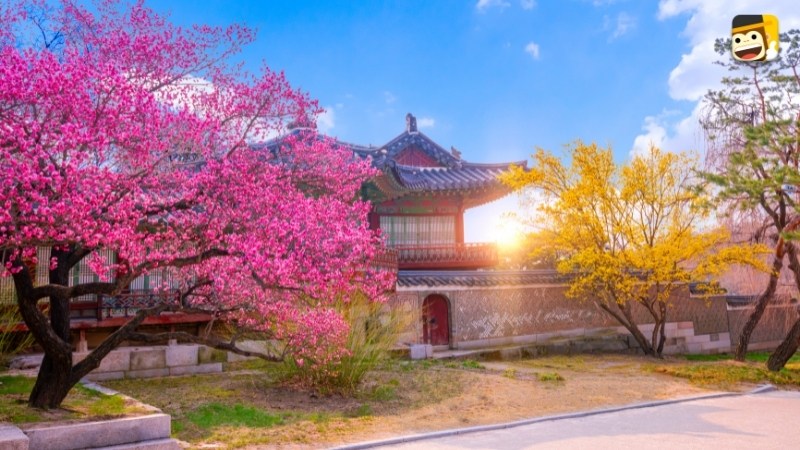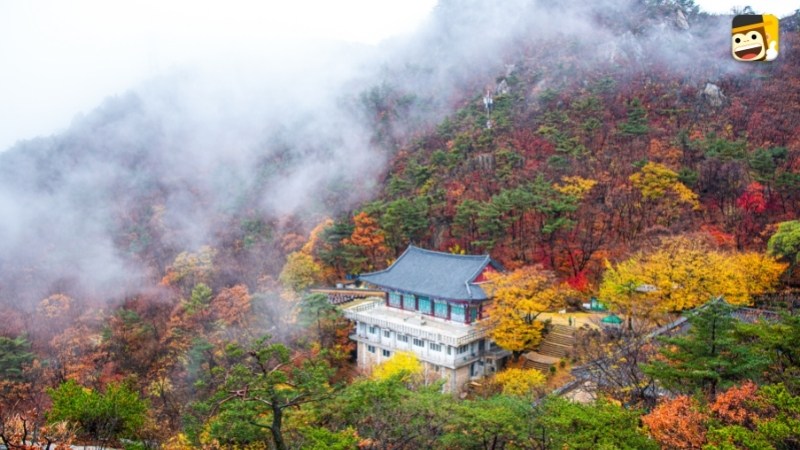As the winter winds down, it’s time to consider your wardrobe for the upcoming spring/summer/autumn seasons. So, today, we will learn how to talk about seasons in Korean in this article. The country has four seasons: hot and humid summer and cold and windy winter. If you intend to learn Korean or plan on traveling to Korea, you will visit it during a certain season, and knowing the words for the four seasons can be extremely useful. So if you are planning a trip, make sure to check the climate and pack appropriate clothes before departing.
Here is an overview of the four seasons in Korean. Stay tuned for more!
The Four Seasons in Korean

Depending on the country’s location, different countries have different types of seasons. Some have only two, and others have four. Considering the obliquity of the Earth, it is impossible for a place to have a single season, so conditions in this answer are taken to be constant, particularly in terms of temperature and precipitation.
Temperature, weather, and, most importantly, Earth’s position in relation to the sun all contribute to this. Our main focus for today’s lesson will be to learn how to say the Korean season-related words. For a start, the Korean word for a season is “gyejeol.”
How Many Seasons Are There In Korea?
The seasons in Korea are much like what you would find in Europe, with a little extra. The winters are colder than those in the United States, but the summers are not too bad. In winter, there are the typical four seasons that you would find in the United States: spring, summer, autumn, and winter.
What Are The Four Seasons In Korean?
We now know that Korea has four seasons. Now let’s learn how to say each Korean word and describe it in Korean. Additionally, knowing how to talk about seasons in Korean can be useful for explaining your home country’s climate and different seasons (or lack thereof) to a Korean friend.
1. Seasons In Korean: Spring (봄 bom)
Spring is a time of new beginnings, and for some, it may be the time of year when they start dating. Koreans call spring (bom) spring. In Korea, the spring is rather short, but it is beautiful when the flowers bloom, as the various tree blossoms.
2. Seasons In Korean: Summer (여름 yeoleum)
In Korean, summer is called yeoleum (summer). It’s a hot, humid season in Korea, with a monsoon season thrown in. Heading to the beach during summer is a great way to escape the heat and quite a popular one in Korea.
3. Seasons In Korean: Autumn (가을 gaeul)
Autumn is another short but beautiful season in South Korea or gaeul in Korean. Autumn brings the leaves changing colors and a more picturesque landscape. In Korean, you would also use autumn (gaeul) to say fall. A beautiful array of autumn colors adorns this mountainous region in the autumn.

4. Seasons In Korean: Winter (겨울 gyeoul)
Korea’s last (and first) season for the year is called winter (gyeoul). Winter in Korea is a season of white, cold, and wind. The holidays, in particular, are a time to stay indoors, huddle by the fireplace, and eat bowls of homemade soup.
The temperature during this time is usually around -10 to -5 degrees Celsius, with the lowest temperatures happening in late December to early January. It is usually accompanied by lots of snow and a lot of cloud cover.
When Does Each Season Begin?
Particularly when people plan to travel to Korea, this question is frequently asked. In addition to learning the words for the four seasons in Korean, if you’re planning to visit Korea during a specific month, you’ll need to know what season it will be.
Spring Months
Korea usually experiences spring between April and June. This is said to be the best time to visit Korea because the weather is just right, and all the flowers are blooming.
Summer Months
Typically, the summer season lasts just from July to August. Summer is short, but the weather can become very hot and humid, so you might want to visit the beach during this time.
Autumn Months
Between September and November, autumn is also a great time to visit Korea. It is also the season of Chuseok, which is the Korean Thanksgiving.
Winter In Korea
For various winter festivals in Korea, it’s best to visit between December and March. The Winter Season Event is one to mark your calendar for, as you can enjoy skiing and other winter activities in other key areas in Korea like Jeju Island.
Talking About Seasons In Korean
Using single words can be challenging, so you may want to learn how to use them together. So let’s start with a basic question:
1) What season do you like?
=어느 계절을 좋아해요?
[eo-neu kye-jeol-eul joh-a-hae-yo?]
To answer, you can say:
2) I like summer. =
저는 여름을 좋아해요.
[jeo-neun yeo-reum-eul Joh-a-hae-yo.]
3) My favorite season is spring.
내가 가장 좋아하는 계절은 봄입니다.
[naega gajang joh-ahaneun gyejeol-eun bom-ibnida.]
4) I prefer winter to all the other seasons.
나는 다른 모든 계절보다 겨울을 선호합니다.
[naneun daleun modeun gyejeolboda gyeoul-eul seonhohabnida.]
Season-related Words In Korean
There are tones of season-related words and expressions in Korean. We will list some of the most important ones in the table below.
| English | Korean | Hangul |
| weather | nalssi | 날씨 |
| snowy | nunoneun | 눈오는 |
| rainy | bioneun | 비오는 |
| sunny | hwachanghan | 화창한 |
| windy | Baram bueneun | 바람부는 |
| stormy | pogpung-chineun | 폭풍치는 |
| clouds | guleum | 구름 |
| thunderstorm | noeu | 뇌우 |
| drought | gamum | 가뭄 |
| forecast | yecheug | 예측 |
| downpour | hou | 호우 |
| climate | gihu | 기후 |
| temperature | ondo | 온도 |
| fog | angae | 안개 |
| heatwave | pog-yeom | 폭염 |
Learn Korean With Ling App
Ling App is a mobile app that allows users to learn Korean in a fun and easy way. The Ling App was specifically designed to make the learning process more interactive using the gamified environment concept. You can download it for iOS and Android, and it’s only a click away, so don’t miss out on learning 60 different languages for free.

If you want to know more about Korean culture and people, check our blog for more info on Korean weather vocabulary or basic Korean greetings. Have fun learning with us!
Are you ready to master the Korean language? Download Ling from App Store or Google Play Store and try it out today!














